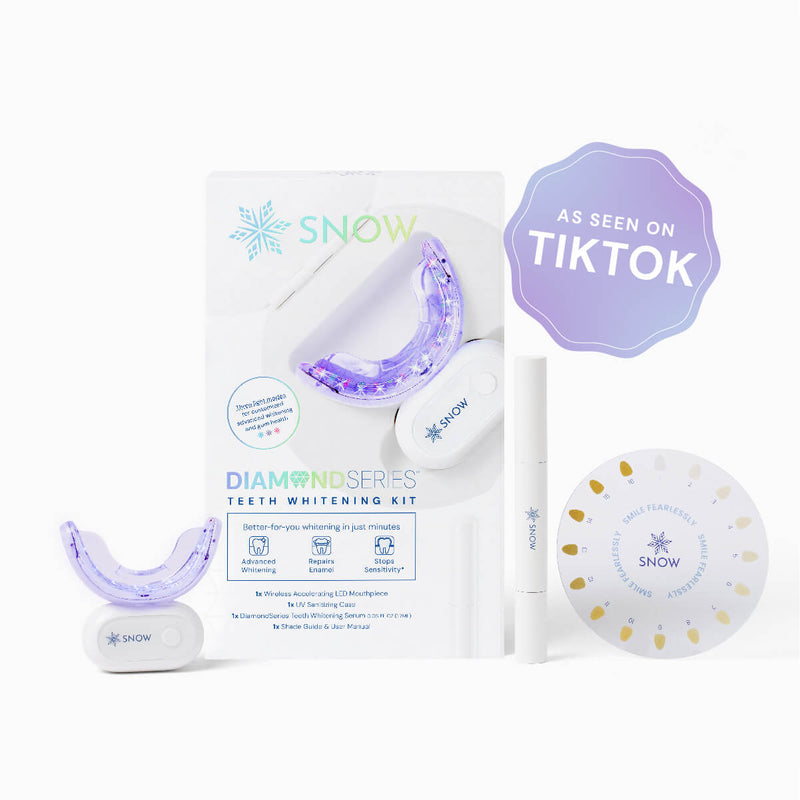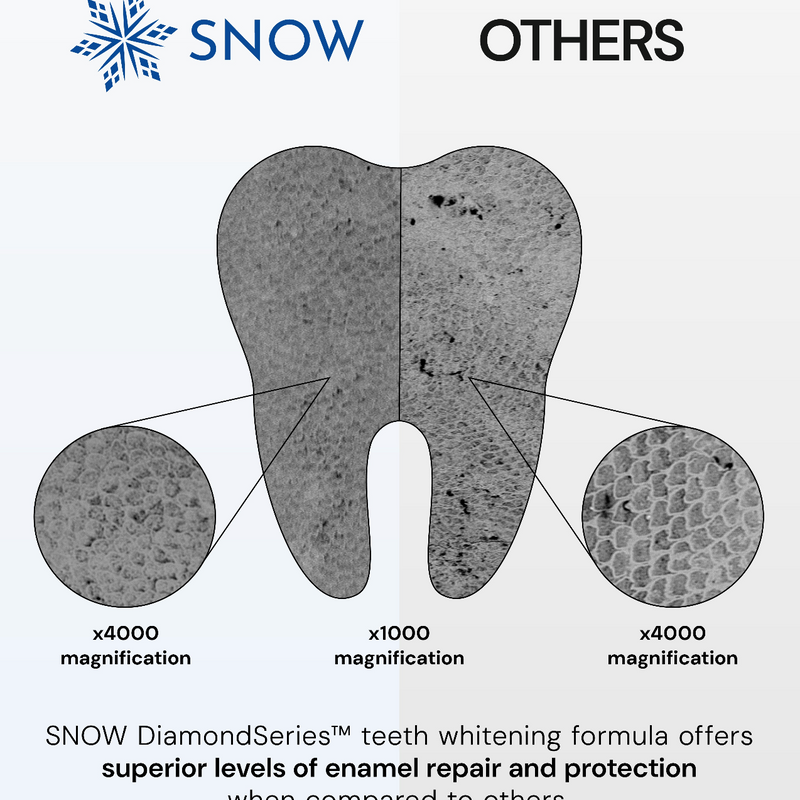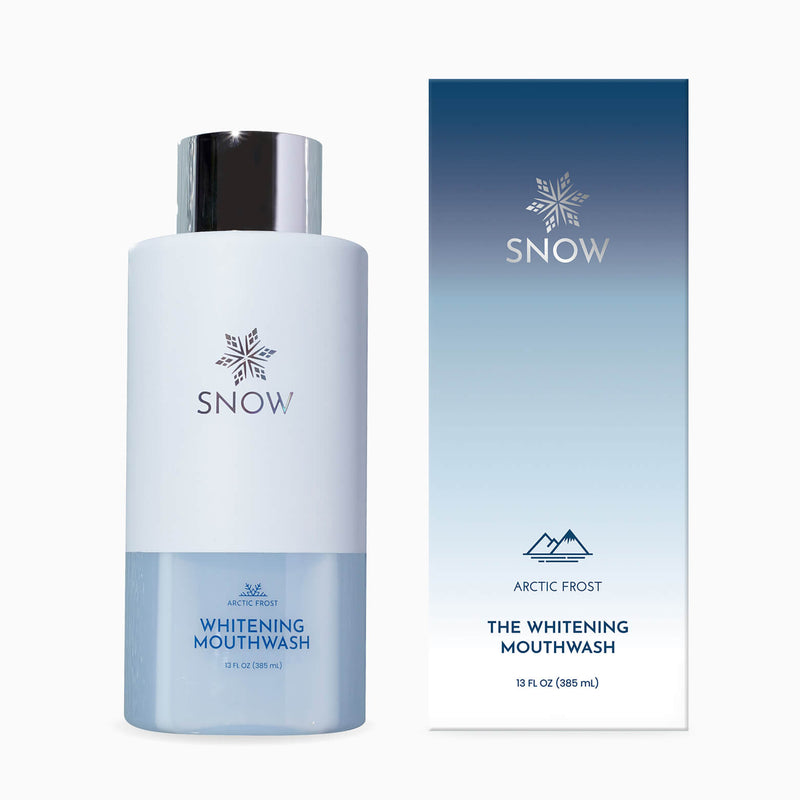What is the back of the toothbrush for? The back of a toothbrush, often overlooked, is specifically designed to clean your tongue, helping remove bacteria and debris that cause bad breath and other oral health issues.
At SNOW, we understand the importance of comprehensive oral hygiene. Our expertise in innovative dental care solutions will guide you through maximizing the benefits of your toothbrush for a healthier, brighter smile.
In this article, we'll explore the role of the back of the toothbrush, why tongue cleaning is essential, the anatomy of a toothbrush, and tips for maintaining optimal oral health.
What this article covers:- Is The Back of a Toothbrush for Your Tongue?
- Why Should You Clean Your Tongue?
- What Parts Make Up a Toothbrush?
Is The Back of a Toothbrush for Your Tongue?
Yes, the back of a toothbrush is specifically designed to clean your tongue.
Most modern toothbrushes feature a textured back that acts as a tongue scraper, effectively removing bacteria and debris from your tongue's surface. This is crucial for maintaining fresh breath and overall oral hygiene.
According to WebMD, regular tongue cleaning can significantly reduce bacteria that cause bad breath and improve overall oral health.
Using the back of your toothbrush to clean your tongue is a simple yet effective addition to your daily oral care routine. Regular use helps to ensure your mouth feels cleaner and healthier by reducing harmful bacteria and debris.
You can purchase a tongue-scraping attachment for our LED Teeth Whitening Electric Toothbrush to maximize your oral hygiene routine, promoting both a whiter smile and a fresher breath.
This integration makes it easy to incorporate tongue cleaning into your everyday habits, ensuring comprehensive oral care.

Why Should You Clean Your Tongue?
Cleaning your tongue helps eliminate bacteria that can lead to bad breath, enhances your sense of taste, and contributes to better overall oral health by reducing the risk of plaque buildup and oral diseases.
According to MouthHealthy, using a tongue scraper or the back of your toothbrush can significantly reduce the bacteria that contribute to bad breath and oral infections. Regular tongue cleaning also helps maintain a fresh breath and ensures that your mouth feels clean and healthy.
Incorporating tongue cleaning into your daily oral care routine can be simple and highly beneficial.
Using SNOW's LED Teeth Whitening Electric Toothbrush with its tongue scraper makes it easy to maintain a comprehensive oral hygiene routine.
This advanced toothbrush not only whitens your teeth with its LED technology but also ensures that your tongue is clean, promoting fresher breath and overall better oral health.
How Often Should You Clean Your Tongue?
You should clean your tongue daily, ideally every time you brush your teeth. Regular tongue cleaning helps consistently remove bacteria and debris, maintaining fresh breath and a healthier mouth.
According to our research, daily tongue cleaning can significantly reduce the bacteria that cause bad breath and oral infections.
By incorporating this simple step into your oral care routine, you can ensure a cleaner, fresher mouth every day. Always start by wetting your toothbrush before applying toothpaste for optimal cleaning.
What Parts Make Up a Toothbrush?
Understanding the different parts of a toothbrush can help you make an informed choice about your oral hygiene tools.
Here's a breakdown of the main components of a toothbrush and their functions:
Handle
The handle of a toothbrush is designed for a comfortable grip, allowing you to maneuver the brush effectively during use.
It's usually made from durable plastic to ensure longevity and ease of use.
Grip
The grip section of the handle often features textured patterns or rubber for slip resistance, ensuring precise control during brushing.
This helps maintain consistent brushing habits by providing a secure and comfortable hold.
Head
The head of the toothbrush houses the bristles and can vary in size and shape.
A well-designed head ensures accessibility to all tooth surfaces, including hard-to-reach areas like the back molars.
This design is crucial for effective cleaning and maintaining oral hygiene.
Neck
The neck connects the handle to the head, providing flexibility and maneuverability.
A sturdy yet flexible neck ensures that the brush can access tight spaces comfortably while maintaining durability.
Bristles
Bristles are crucial for effective cleaning. They come in different levels of firmness, from soft to hard, catering to various oral care needs.
Soft bristles are generally recommended to prevent enamel wear and gum recession while ensuring effective cleaning.
Tongue Scraper
Many toothbrushes now include a built-in tongue scraper on the back of the head or, as is the case with our electric toothbrushes, tongue scraper attachments.
This feature enhances oral hygiene by removing bacteria and debris from the tongue's surface, promoting fresher breath and overall mouth cleanliness.

Conclusion
The back of a toothbrush plays a helpful role in your oral hygiene routine by serving as a tongue scraper. This feature helps in removing bacteria and debris from your tongue, contributing to fresher breath and overall better oral health. Incorporating this simple step into your daily routine can make a significant difference.
By understanding the various parts of a toothbrush and their functions, you can make informed decisions to maintain optimal oral health.
At SNOW, we are committed to providing innovative oral care solutions like our teeth whitening portable electric toothbrush, which includes a built-in tongue scraper for comprehensive cleaning and whitening.
Discover more about whitening teeth, and how our products can enhance your oral care routine by visiting our website.
If you want to learn more, why not check out our related posts:
- Electric Toothbrushes on Planes
- Are Electric Toothbrushes Good for Your Teeth
- Is Brushing Your Lips with a Toothbrush Bad
- Will Rubbing Alcohol Kill Strep on a Toothbrush?
- Does Peroxide Kill COVID on a Toothbrush?
- How Long Does an Electric Toothbrush Take to Charge?
- Best Electric Toothbrush Heads
- How Long Should You Brush Your Teeth With an Electric Toothbrush?
- How Long Does Herpes Live on a Toothbrush?
- Are Electric Toothbrush Heads Interchangeable?
- How Long Does It Take for a Toothbrush to Dry?
- How Long Do Viruses Live on Toothbrushes?
- Soft Bristle Electric Toothbrush
- What Are Toothbrush Bristles Made of?
- How Many Bristles Are on a Toothbrush?

























